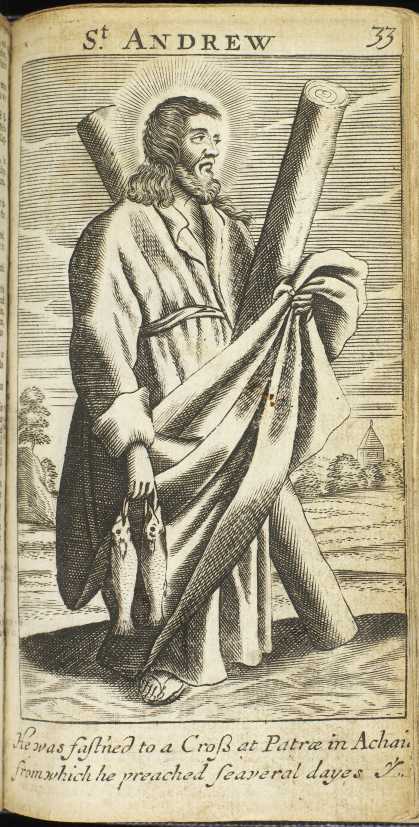
The Holy Bible : containing the Old and New Testaments … Oxford : Printed by the University Printers, 1695. New College Library B.r.468
Today, November 30, is Saint Andrew’s day, also celebrated as Scotland’s national day.
The Oxford Dictionary of Saints (available online to University of Edinburgh users) notes that the cult of St Andrews was evident in England from Anglo-Saxon times, when the church in Rochester was the earliest of 637 medieval dedications to St Andrew. His legend grew to include the translation of his relics from Patras to Scotland by St Rule or Regulus in the 8th century. It is said that under angelic instruction, St Rule stopped at the place in Fife now known as St Andrews and built a church there, which became a centre for Christian evangelization and learning. St Andrew is commonly depicted with the saltire cross (X), which is used to represent Scotland on the Union Jack.
This image of St Andrew, patron saint of Scotland, comes from a seventeenth century English Bible which contains attractive illustrations of Bible scenes and pictures of the saints. It has bound with it metrical Psalms in the version of the Scottish Psalter, 1564. It is part of New College Library’s Early Bibles Collection, catalogued online as part of the Funk Cataloguing projects.
